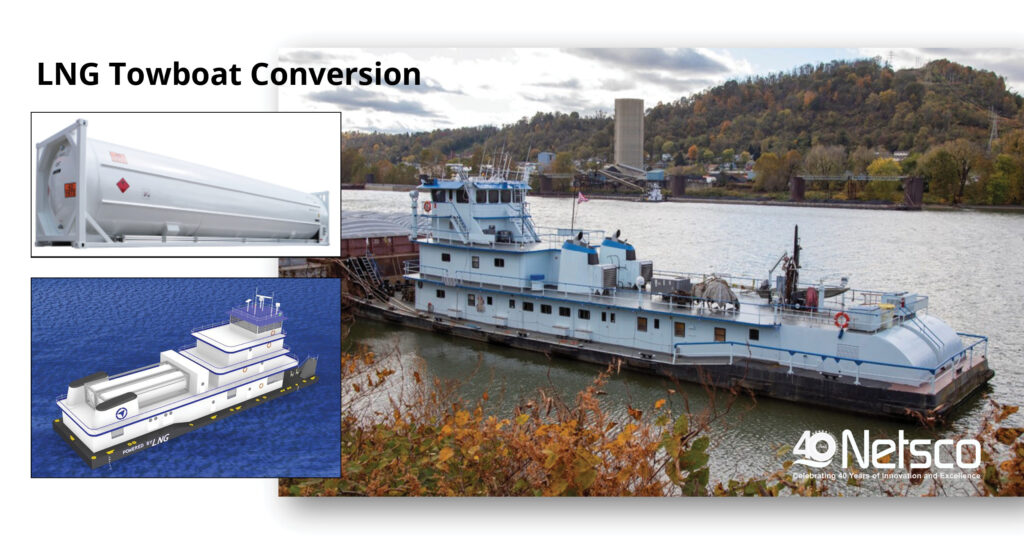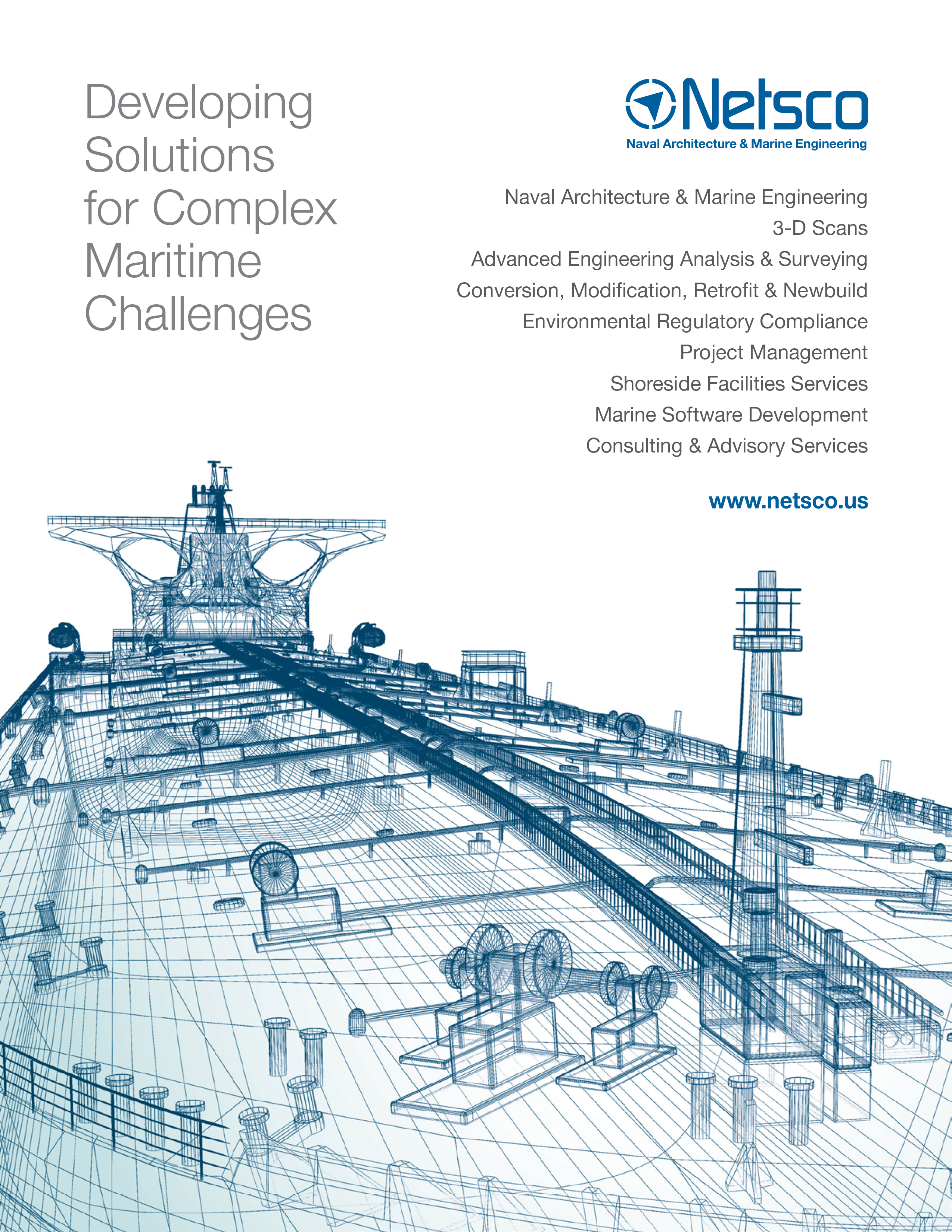Expertise
With new emission reduction requirements, conversion to LNG is one of several potential cost-competitive options. Since 2014, NETSCo has been involved with projects in LNG conversion. Any vessel can be converted where available space exists for the LNG tank, but analyzing vessel stability, the age of the vessel, fuel cost analysis, and charter or shipping routes all come into play before deciding if it is the best course for your vessel. Our experience designing LNG concepts employ both independent and membrane cargo containment systems. Whether you are seeking an LNG bunker barge, LNG ATB, or LNG carrier, NETSCo is actively involved in the developing rules and can deliver a quality liquefied gas vessel design.
Below is a review some of our recent projects:
- Cargo Containment System Analysis and Design
- Cargo Handling System
- Fuel Systems
- BWTS Retrofit
LNG Towboat Conversion Case Study

The Mississippi River towboat is an essential component of America’s shipping industry, facilitating the transportation of valuable goods and machinery along the river. However, operating these vessels comes at a significant cost to the environment. The burning of traditional fuels, such as diesel, produces harmful greenhouse gases that pollute the air and contribute to climate change. As the world evolves towards sustainable energy, companies in the maritime sector must adopt greener practices to preserve our planet’s future. In that regard, NETSCo, along with interested stakeholders, evaluated the feasibility and conversion costs associated with converting a river towboat to LNG propulsion.
NETSCo undertook a holistic approach to the feasibility study by evaluating various components and factors that influence the viability of converting a river towboat to LNG propulsion. The analysis comprised of the following:
Operating profile
A river towboat typically has a frequent start and stop pattern, making it an ideal fit for LNG propulsion since this fuel has fast load-response capabilities. As such, LNG-powered towboats are more efficient and economical compared to diesel.
Fuel storage
LNG requires more storage space than diesel, necessitating modifications to the vessel’s cargo deck and fire suppression systems. Through optimization engineering, NETSCo demonstrated a functional fuel system’s seamless integration with the current vessel design.
The conversion involves replacing the old engines with dual-fuel or dedicated natural gas engines. The existing power management system will require adjustment to accommodate the new engines. NETSCo engineers provided the most optimal engine and power management configuration with minimal impact on the existing vessel.
First responders and crew members must undergo intensive training on handling LNG propulsion systems. The retrofitting process would also require adherence to specific safety standards and protocols for installation and operation. NETSCo developed and incorporated a comprehensive safety management plan to mitigate potential hazards from incorporating LNG systems into the existing vessel.
The total conversion costs are highly dependent on several factors, including existing vessel conditions, current fuel prices, and local regulations. However, based on NETSCo’s analysis, a towboat conversion is achievable and economically feasible. Initial investment costs are expected to be recovered through operational and maintenance cost savings from using LNG propulsion. The ROI period depends on fuel prices, but typical recovery periods are between 2 to 5 years.
NETSCo’s feasibility assessment of converting river towboats to LNG propulsion demonstrates the significant positive impact on the environment and maritime business. The reduction in greenhouse gas emissions results in lower CO2, NOx, and SOx pollutants release, resulting in safer and cleaner air and water quality. This study also highlights the maritime industry’s commitment to sustainable energy, innovative solutions, and cutting-edge technology. We believe that converting river towboats to LNG is the optimal choice for businesses operating in the inland waterways, and we are excited to support companies in this transition.

